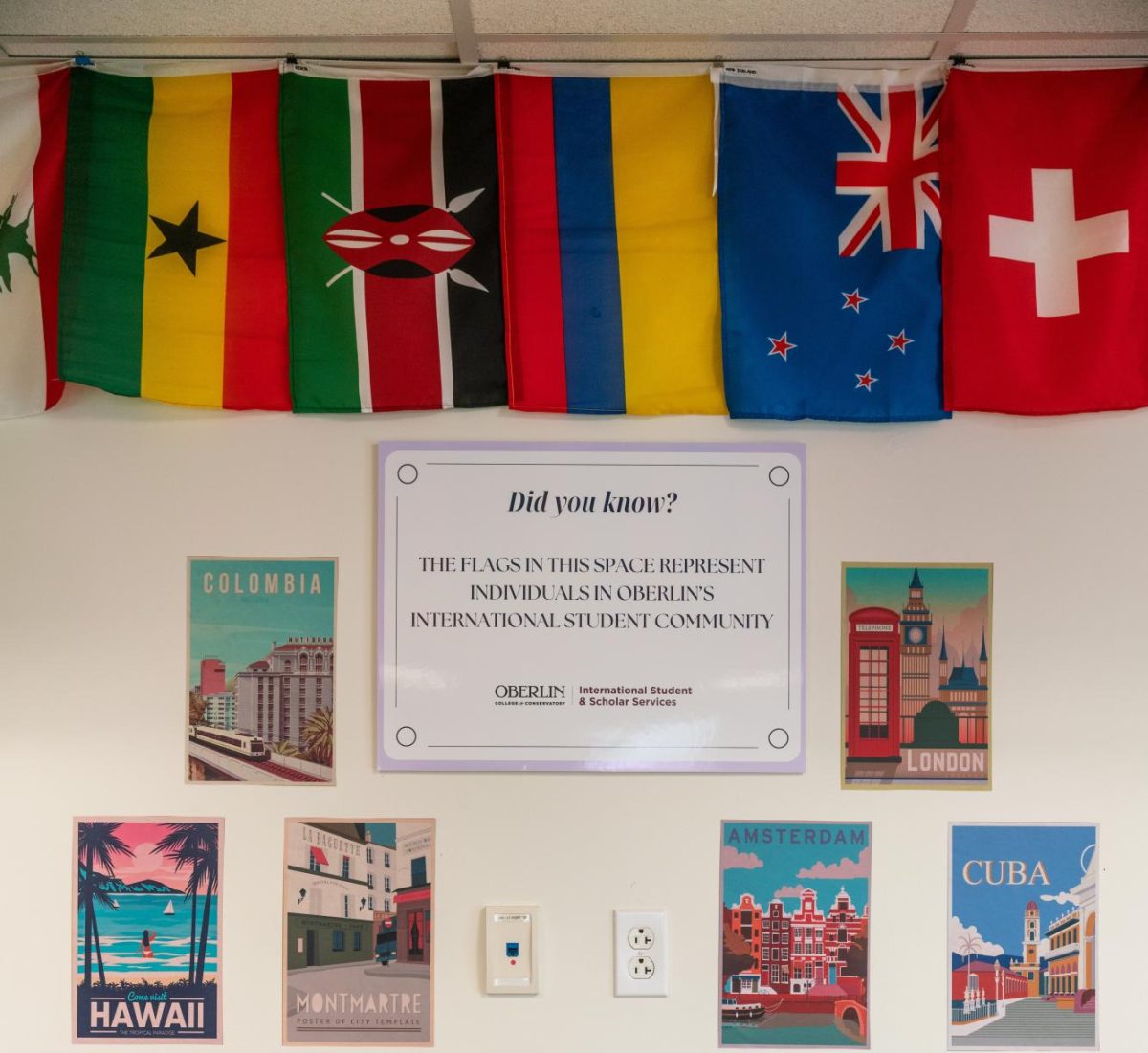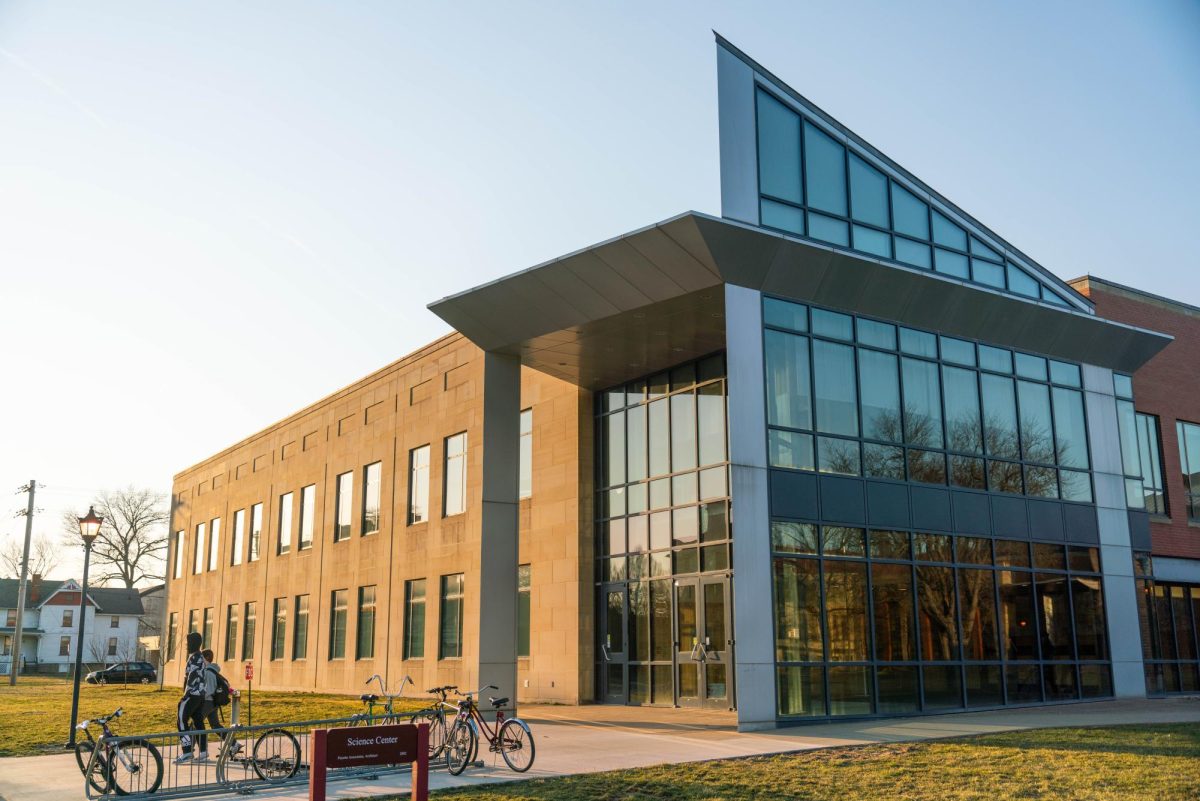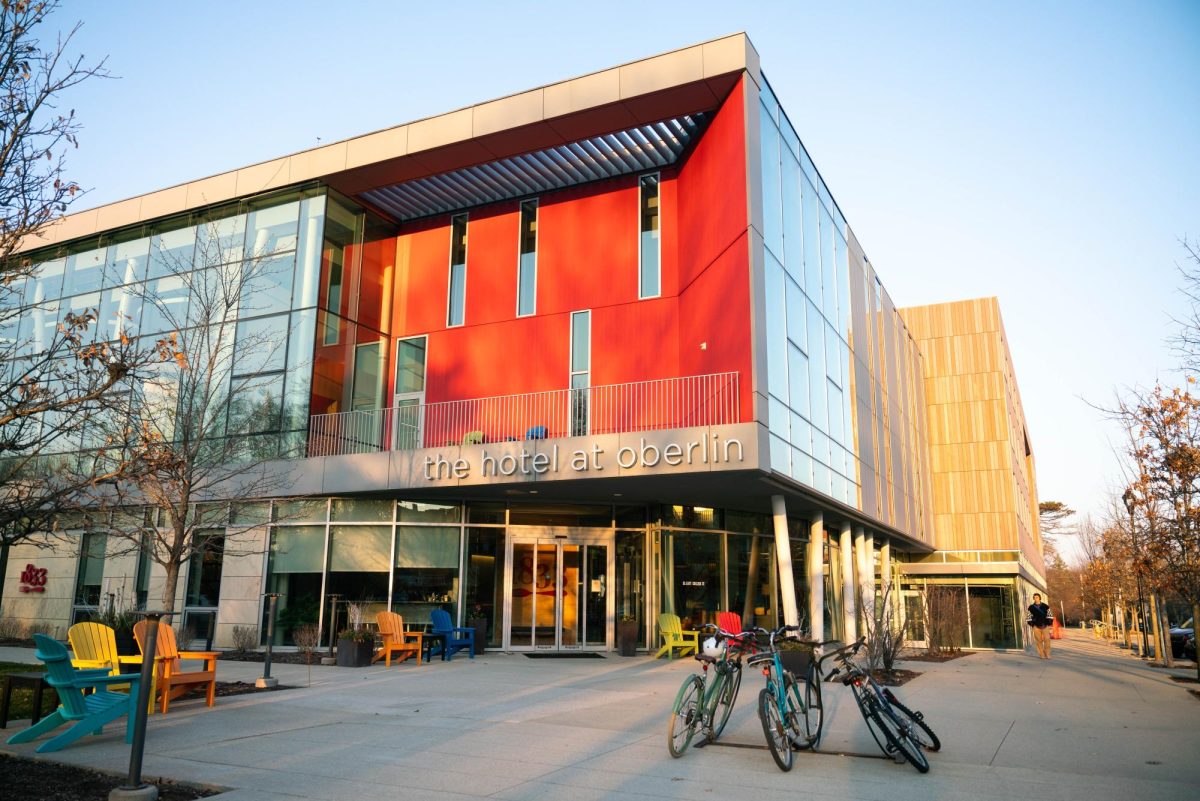Ecolympics, Oberlin College’s annual sustainability competition encouraging students to reduce their resource consumption, coincided this year with the relaunch of Oberlin’s environmental orbs, a longstanding feature of the campus’ environmental efforts.
Ecolympics featured a variety of events, from educational workshops to creative competitions.
“Something really cool they did was dorm-decorated flags,” College third-year Alira Allen, a Geosciences and Sociology major, said. “It was so cool to see the dorms come together to make a flag that represented them; it was really wholesome and cute. There was also the first annual fun run, which I participated in; it was super fun to see not only Oberlin students but the community come together for a common goal. After the fun run, we met at the [Adam Joseph Lewis Center for Environmental Studies] for the opening ceremony. There were tables from different organizations around campus, refreshments, and a bike-powered blender that made smoothies.”
The competition also incorporated the newly reintroduced environmental orbs, which display real-time feedback on a building’s water and electricity consumption.
Paul Sears Distinguished Professor of Environmental Studies and Biology and Chair of Environmental Studies John Petersen, OC ’88, one of the people who conceptualized the orbs, emphasized their impact.
“Several generations of Oberlin students have now contributed their creativity to the orb[s] as computer programmers, hardware engineers, product designers, promoters, and environmental activists,” Petersen said.
Originally developed in 2007, the environmental orbs were designed to encourage sustainable habits through visual cues. According to College second-year Maxwell Julius, they are installed in all of the large residential houses and emit pulses of different colors to communicate the level of water and electricity use in the building.
“The real-time nature of this feedback is designed to communicate the dynamic nature of resource consumption and encourage awareness and conservation,” Julius said.
The new orbs include improved color patterns and a QR code that links to real-time data visualizations.
“I think Ecolympics and similar initiatives on campus are doing an amazing job,” Allen said. “They are run by amazing people, and I think the bandwidth of the things they can do will only increase as the years pass.”









